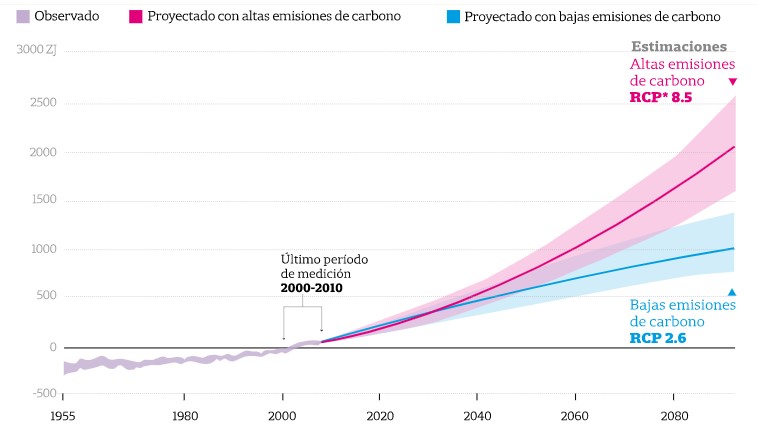Article on the rise in sea level
Rise in Sea Level
Article on the rise in sea level due to increasing ocean temperatures caused by the rise in greenhouse gases (GHG). La Nación Argentina.
The coastlines of Argentina and Uruguay, like many other coasts worldwide, are experiencing a decrease in surface area and disruptions in marine fauna due to rising ocean temperatures.
Determining the extent of sea level rise and projecting future increases involves complex variables. Limited historical and continuous records, along with the inclusion of local factors, contribute to the challenge of accurately determining these scenarios.
For this article, data was sourced from the Intergovernmental Panel on Climate Change (IPCC). Ocean heat increase at a depth of 2000 meters was simulated using measurements on the ZJ scale (zetajoule), which quantifies heat absorption by the ocean. Two groups were considered: areas with high carbon emissions and areas with low carbon emissions. Historical and projected data were analyzed.
Simulation of the increase in ocean heat at a depth of 2000 meters

The rise in ocean temperature, influenced by factors such as terrestrial ice loss, decrease in ocean salinity (impacting seawater density), changes in ocean currents, buoyancy, and atmospheric pressure, leads to an increase in sea level. By considering projected sea level rise for low and high emissions scenarios until the year 2300, the following graph was generated.
Sea level rise to 2300

Based on this graph, an infographic was created to visualize the potential impact on coastal cities. According to projections for low and high emissions, by the year 2300, ocean water levels could rise between 1 and 6 meters, resulting in the submersion of coastal cities.
How would it affect coastal cities?
By the year 2300, according to projections of low and high emissions, the ocean water level would rise from 1 to 6 meters above sea level, potentially submerging coastal cities under the sea.
